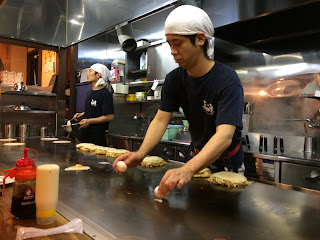From bustling Tokyo, we boarded a luxurious Singapore Airlines flight to Asia's tiniest city-state for the second leg of the Paul and Jen summer reunion trip. Singapore tends to divide public opinion along pretty even lines: people love it for its clean, rule-abiding, well-organised, educated population; people hate it for its clean, rule-abiding, sterile smallness.
With a 30 hour stopover between Japan and our next destination, Malaysia, I'm not sure we had time to come to any definitive conclusions. Plus, in all reality, the only reason we came was to spend the night at the Marina Bay Sands. In an attempt to maximise our MBS time, we arrived late on Monday night and checked into a comparatively cheap (but still fairly expensive) private hostel room, a room without any windows.
Pre-check in the next morning, we took to the streets of Little India and Chinatown. Much like Malaysia, Singapore's humble beginnings as a trading port make it possible to glance all of Asia's cultures in microcosm. In Little India you can eat lunch, worship in a temple and buy garlands down the same tiny side road:




And then you step down another road in another part of town and the smells, sounds, sights (minus the spitting, it's illegal here, thank God; and the durian...durian is illegal to transport on the metro) could be China:


At precisely 2pm, we dragged our bags to check in at the Marina Bay Sands. And from there, the details get a bit fuzzy. I mean, we checked out the view of part of the 50% of Singapore that's covered in parks and public gardens:

And then we toddled up to the infinity pool that spans the top of the 57th floor, connecting the three buildings in watery unity. From there, we languished behind room key-access only security eating chips and drinking Singapore Slings. Half the pool was adult-only; the drinks arrived to your deck chair; the view from the edge made you feel otherworldly.





As the lights went down and the pool remained crowded, we decided to come up for air and hit the city, if nothing more than for the view we were currently a part of.

This too, did not disappoint:









































